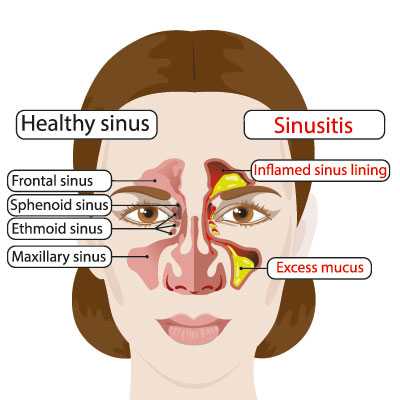
Xanthelasma
Xanthelasmen Although they are harmless, but can still make the affected hard to deal with. The deposits under the skin are usually in a well-visible place and are therefore an aesthetic problem. People who notice xanthelasma on their skin should contact their doctor immediately.
Table of Contents
What is a xanthelasma??
Xanthelasmen are yellowish, sometimes reddish, fatty nodules in the skin of the eyelids. They appear symmetrically on the inner angle of the upper and lower eyelids. In most cases, the upper eyelids are affected. The sharply defined fat deposits are usually soft (foam cells), consist mainly of cholesterol and can be moved with some pressure. The skin above it lets the lipid deposits show through.
Although they are not contagious and cause no further problems for their wearer, most people have them surgically removed. The unsightly fat nodules are caused by a disorder of lipid metabolism that may be innate or acquired. It usually occurs only from the age of 40 on. Women are more affected than men.
causes
However, people without pathologically elevated blood lipid levels can also suffer from xanthelasma (normolipidemic xanthelasma). Whether the tendency to Xanthelasmen can be inherited, has not yet been conclusively clarified. Patients with xanthelasma that are not high in cholesterol are considered by the medical community to be at risk: they are more at risk of developing cardiovascular disease than people without the ugly subcutaneous fat nodules. They suffer 50 percent more heart attacks than other people. In addition, research suggests that they have an increased tendency to store cholesterol in the walls of blood vessels (arteriosclerosis). In addition, they may have primary biliary cirrhosis.
Symptoms, complaints & sign
Xanthelasma is painless and has no other symptoms. Therefore, they are also considered a purely cosmetic problem: the cost of their removal are only covered by the private health insurance. The fat deposits felt by the sufferers as emotionally stressful even appear within a short time (eruptive xanthelasma).
Occasionally, the person affected also finds them in other parts of his body (tendon sheaths and extension sides of elbows, knee joints, buttocks). There they are called xanthomas.
diagnosis & disease
Patients with xanthelasma should first have their blood tested to see if their fat deposits are due to a lipid metabolism disorder. The doctor detects cholesterol, blood sugar, thyroid and uric acid levels. If positive, the underlying disease is treated.
Despite therapy, the ugly fat blisters usually do not return by themselves. Over time, more and more xanthelasma may form on the eyelids. In addition, existing ones can become even higher and wider. In rare cases they can cause permanent drooping of the eyelid (ptosis).
complications
Xanthelasma is not usually associated with complications. For many people, however, they are a cosmetic problem that needs to be addressed. If there is no treatment, for example because the health insurance does not cover the costs, this often results in emotional distress for the person concerned.
It can lead to the development of social anxiety and depression – problems that permanently limit well-being and quality of life. Serious psychological complaints are possible, above all, in the case of spontaneous new formation or the spread of fat deposits to other parts of the body. Physical discomfort can occur if the person is scratching or mistreating xanthelasma.
Certain cosmetics can cause skin irritation and may also affect fat deposits. In surgical treatment, there is always the risk of scarring and adhesions. In addition, bleeding and wound healing disorders can occur. Even with the application of trichloroacetic acid scars may remain.
If xanthelasma is around the eyes, it can cause ectropion. The laser treatment can leave scars and cause burns. In addition, sensory disturbances can occur in the affected area. Also allergic reactions are possible depending on the type of treatment.
When should you go to the doctor?
For changes in the appearance of the skin, a doctor should check the visual irregularities. If they suddenly and suddenly appear, they are often an indication of a health impairment. Since there are risks of complications, consult a doctor if symptoms increase or inconvenience persists. Although the xanthelasma does not show any medical significance from a medical point of view, other skin diseases should be excluded. This is only possible if the person concerned seeks cooperation with a doctor to clarify the cause. If nodules form or show discoloration of the skin, this is in many cases to be understood as a warning signal of the organism.
Often there are changes in the eyelids. This can be uncomfortable and cause a visual blemish. The consultation with a doctor is advisable if due to the changes in the skin condition of the emotional or emotional stress. If it comes to strong feelings of shame or shows a withdrawal from the social life, a doctor’s visit is necessary. With anxiety, the decrease of the cognitive performances or a depressed mood the affected one needs help. If vegetative disturbances, an inner restlessness or a never-ending pondering, a doctor’s visit is recommended.
therapy & treatment
Since xanthelasma is usually absent even after the treatment of the underlying disease, it is advisable to remove it surgically. Depending on the location and size of the nodules, they are removed by electrocautery, cryosurgery, laser technology, surgical excision, and the application of trichloroacetic acid.
The excision has the disadvantage that scars usually remain and the surgical site is reddened for a long time. Since the annoying fat nodules usually reappear later in the same place, the surgical intervention usually only makes sense if the patient at the same time still makes an upper eyelid tightening. The most widely used and successful method is the lasering of xanthelasma.
Erbium laser, CO2, dye and argon laser are used. They leave no visible scars. The lasered skin is usually healed after just a few days. After the second treatment at the latest, the xanthelasma have finally disappeared and do not reappear. The only drawback of lasering is that hypo and hyper pigmentation may later occur in some patients at the treated site.
The application of 50% trichloroacetic acid has the disadvantage that it also leaves scars. In rare cases, it can even lead to ectropion (outwardly bent edge of the lid). Normal surgery – if there is not enough skin on the xanthelasma site – can cause the eyelid to become inaccessible. In addition, a (visible) scar shrinkage can occur.
Here you will find your medication
prevention
The emergence of xanthelasma can not be prevented by the patient, as the exact factors leading to it are not yet fully understood by medical researchers. However, a regular check of the blood values can give a first indication of a possible blood lipid disorder. In the case of a positive result, a dietary change to low-fat diet with a high content of omega-3 fatty acids and omega-6 fatty acids is recommended. Lipid lowering drugs additionally provide a normal blood lipid level.
A reduction diet can also help to better regulate the lipid balance. With a healthier lifestyle, the patient can at least reduce the risk of developing xanthelasma a little. Instead of the lipid-lowering drugs, he can also take Allium sativum in the potencies D2 to D6 (of the D6 drops 2 times a day 10). Artichoke extract and artichoke juice also help lower cholesterol.
aftercare
Skin abnormalities such as xanthelasma can be easily removed surgically. Local anesthesia ensures that patients enjoy the most painless treatment possible. The procedure takes about 15 to 20 minutes. Afterwards, those affected can immediately pursue their usual activities.
However, care must be taken to avoid prolonged exposure to heat such as sauna or solarium for at least six weeks after treatment. Long and prolonged solar radiation should also be avoided. For the follow-up of Xanthelasmen prescribed the physician an antibiotic ointment. Wound healing is possible without suture.
An appointment to draw threads is therefore not necessary. Patients are able to work and socialize just one to two days after treatment. Since the risk of relapse is extremely high, a healthy diet counts as a follow-up. It is recommended to switch to a vegetable rich, fruit rich, and high fiber diet. In addition, it is advisable to stop smoking.
Nicotine again increases the risk of suffering from xanthelasma. As a rule, the attending physicians advise in advance what to look for in the aftercare and what it looks like. Since there are different ways to remove a xanthelasma, the type of follow-up changes accordingly.
You can do that yourself
The Xanthelasma lead to aesthetic irregularities and thus to an emotional challenge for those affected. Helpful in everyday life is a stable and healthy self-esteem. This protects against periods of strong feeling and can be an important pillar in the management of the disease.
The symptoms improve when the body’s weight is in the normal range of BMI. Overweight and a fatty or overly sweet diet should therefore be avoided. At the same time a sufficient movement should take place, as this stimulates the metabolism and helps to reduce existing overweight. Emotional as well as physical stressors lead to a worsening of the overall situation, since they represent an additional burden for the entire organism. Therefore, the everyday life should be checked for existing stress triggers and, if possible, especially lasting and negative perceived stress should be reduced. Often, cognitive training helps to better deal with everyday challenges.
The burden on the heart should be reduced overall. Attractive leisure activities and concentration on activities that contribute to an improvement in well-being are therefore advisable. For many sufferers, changing the style of clothing helps to keep on wearing loose and loose clothing for a significant improvement in the quality of life. As a result, even perceived problem areas can be concealed.
Related Posts
-

What is decubitus? Causes, symptoms, treatment »
bedsore Pressure ulcers – sore from lying Decubitus is an ulceration due to pressure. The strength of the pressure ulcer can be divided into 4 stages,…
-

Cardiac arrest causes and symptoms – naturopathy – naturopathic specialist portal
Cardiac arrest causes and symptoms This text complies with the specifications of medical literature, medical guidelines and current studies and has been…
-

Chronic sinusitis – causes, symptoms & treatment
Chronic sinusitis Under one chronic sinusitis one understands in medical terminology a permanent sinusitis. It is triggered by infection of the nose with…
-

Copd – causes, symptoms, diagnosis – treatment – home remedies »
COPD – Chronic obstructive pulmonary disease What is COPD? The abbreviation stands for “chronic obstructive pulmonary disease “; this means chronic…
